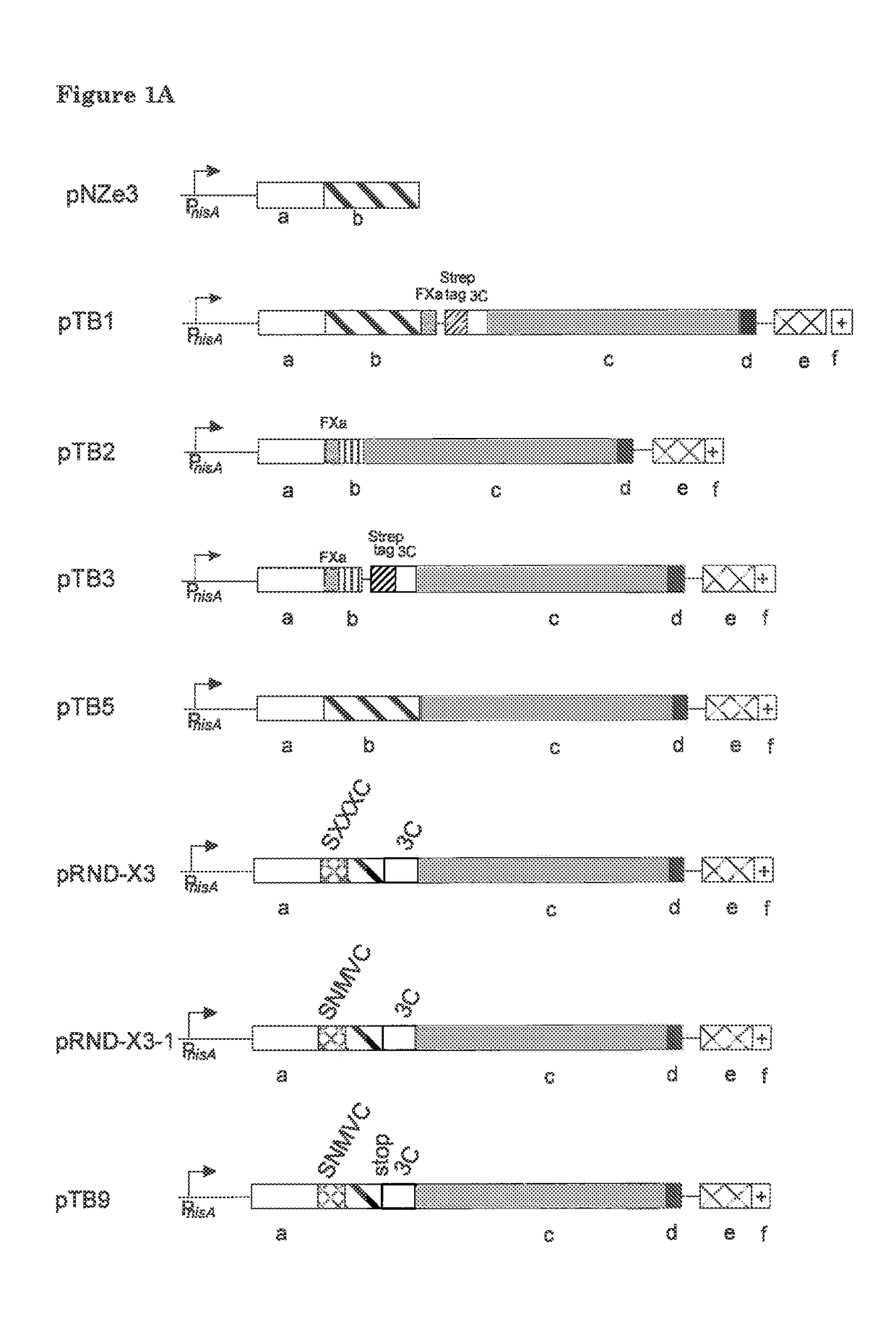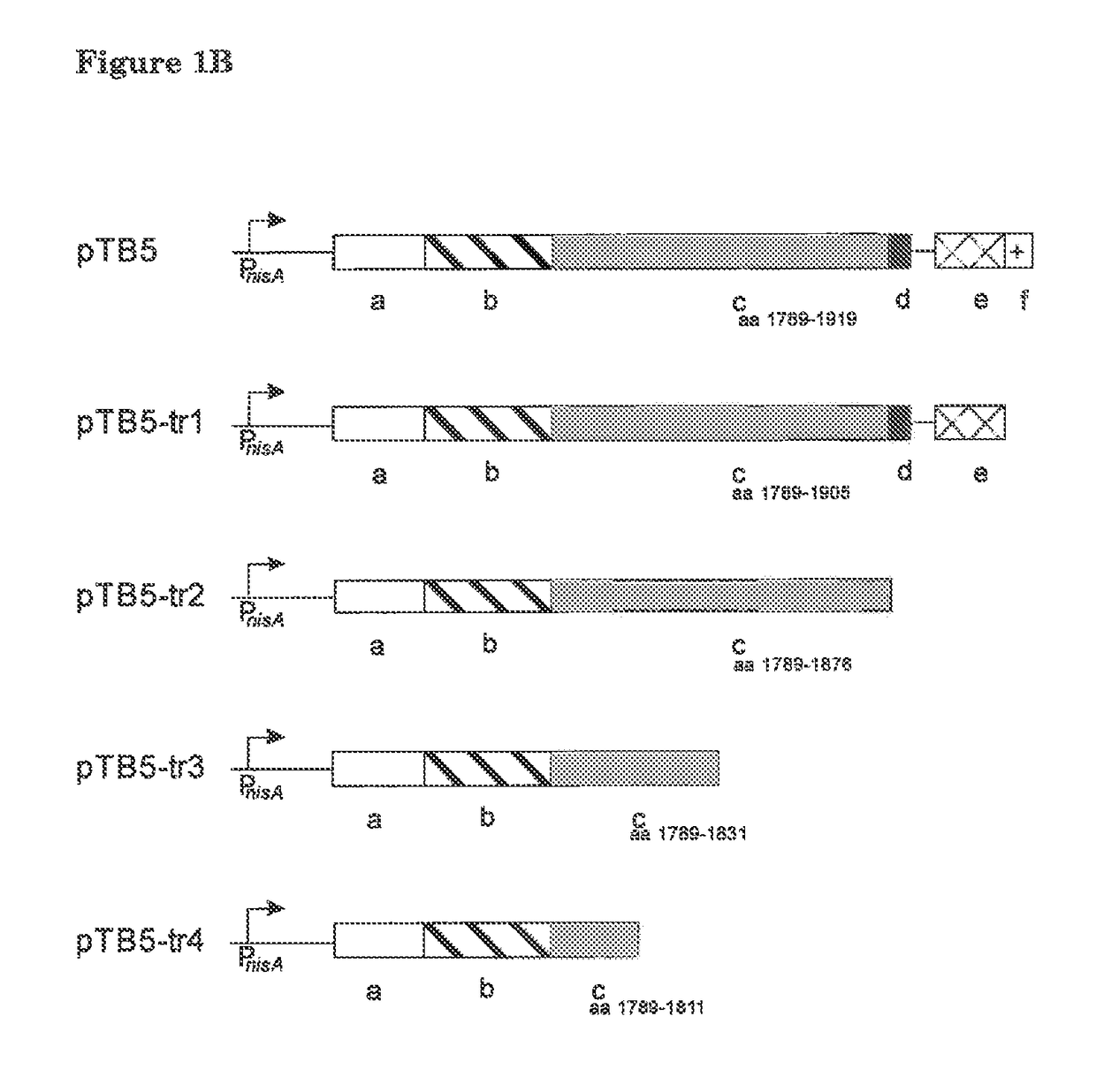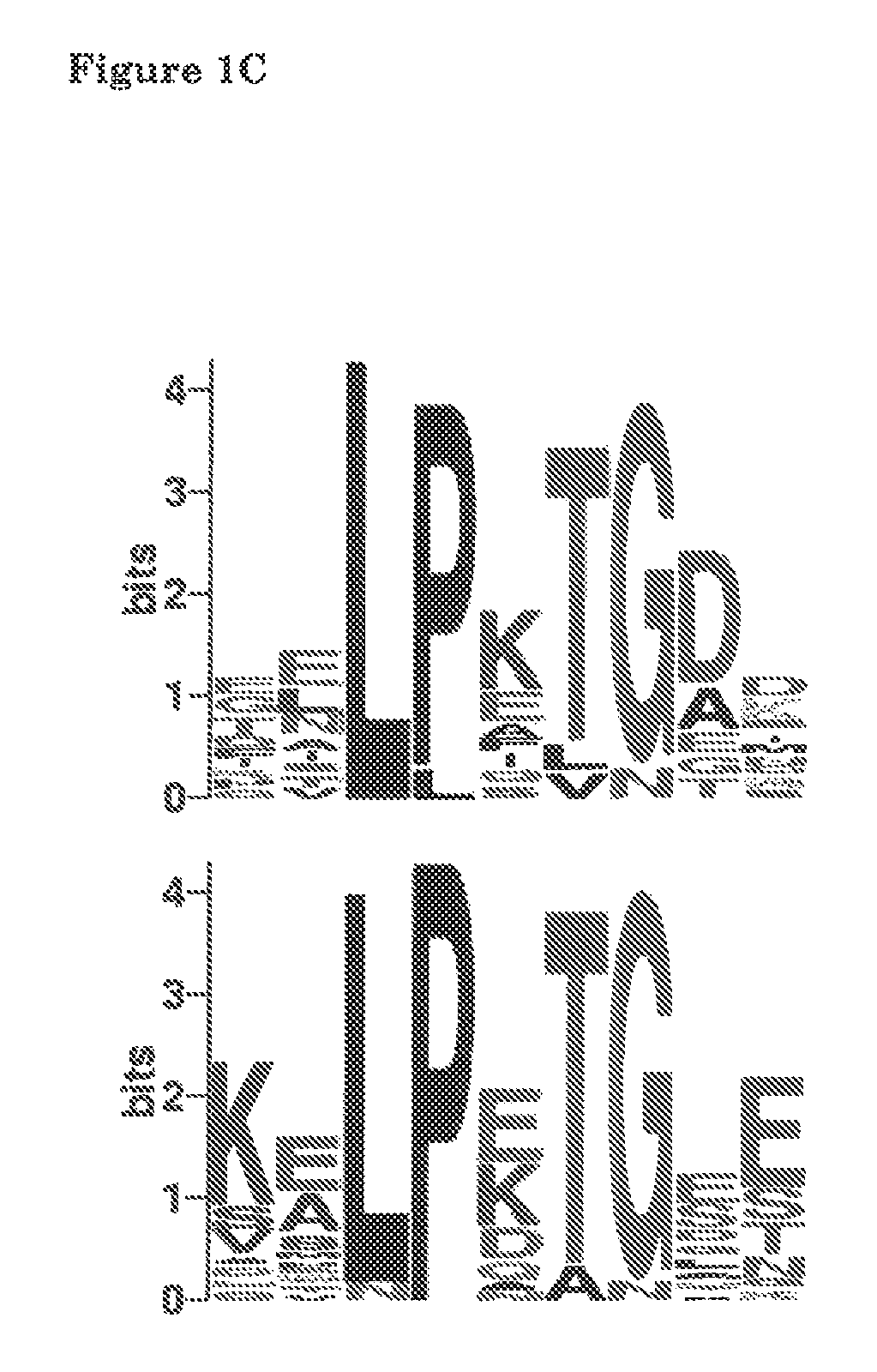Bacterial surface display and screening of thioether-bridge-containing peptides
- Summary
- Abstract
- Description
- Claims
- Application Information
AI Technical Summary
Benefits of technology
Problems solved by technology
Method used
Image
Examples
example 1
Expression Vector for Cell Surface Display of Thioether and Dehydroresidue-Containing Peptides on Lactococcus Lactis
Objective:
[0054]This example concerns the construction of an expression vector for surface display of thioether-containing peptides on Lactococcus lactis. The L. lactis host organism provides the nisin biosynthesis and export machinery for introduction of the thioether linkages in the desired peptide and its export. The peptide is translationally fused to a LPXTG cell wall-anchoring motif such as that of the L. lactis PrtP protease. This anchoring mechanism requires processing by a sortase for covalent anchoring of the peptide to the peptidoglycan of the bacterial cell wall. In this way the peptide and the encoding DNA are linked allowing selection / screening for post-translationally modified peptides with desired properties. Nisin will be used as a model peptide for development and demonstration of the display system.
Materials and Methods
[0055]The LPXTG cell wall-anch...
example 2
Anti-Leaderpeptide Antibodies Demonstrate the Cell Surface Location of the Cell Wall Attached Prenisin Anchor Fusion Protein TB5
Objective:
[0057]Display of TB5 at the cell surface of L. lactis was evaluated with a whole cell ELISA using anti-nisin leader antibodies.
Materials and Methods
[0058]L. lactis NZ9000(pTB5) and L. lactis NZ9000(pIL3BTC / pTB5) cells were grown with and without nisin for induction of TB5. After production cells were collected by centrifugation, washed three times with phosphate buffered saline, pH 7.4 (PBS). An equal number of cells displaying TB5 are incubated with a 1000-fold diluted rabbit anti-nisin leader antibody solution in a final volume of 1 ml PBS plus 0.5% BSA at room temperature for 1 hour under rotation. After washing three times with PBS displayed TB5 was visualized by incubation with alkaline phosphatase conjugated goat anti-rabbit IgG (1:10000) and p-nitrophenyl phosphate (0.5 mg / ml) as substrate. The absorbance was determined at 410 nm, which is ...
example 3
[0060]Prior to cell surface display the prenisin-anchor fusion protein has been modified intracellularly by NisB and NisC. Modification by NisB- and NisC-modified prenisin-anchor fusion protein was demonstrated by antimicrobial activity against overlaid cells after leader peptide cleavage.
Objective:
[0061]Example 2 shows that TB5 is produced resulting in the display of prenisin on the lactococcal cell surface. In this example the modification of nisin by NisB and NisC was evaluated with an overlay of a nisin-sensitive L. lactis strain. Growth inhibition of this strain indicated that NisB and NisC correctly modified and formed at least ring A, B, and C of TB5.
Materials and Methods
[0062]A GM17 agar plate with an extensively washed SDS-PAA gel or spots of pTB5 producing L. lactis NZ9000 cells was covered with a 200-fold diluted L. lactis MG1363 or NZ9000 strain in 0.5% top agar with 0.1 mg / ml trypsin. Trypsin is required for cleaving of the nisin leader yielding active nisin. The agar p...
PUM
| Property | Measurement | Unit |
|---|---|---|
| Fraction | aaaaa | aaaaa |
| Electric charge | aaaaa | aaaaa |
| Length | aaaaa | aaaaa |
Abstract
Description
Claims
Application Information
 Login to View More
Login to View More - R&D
- Intellectual Property
- Life Sciences
- Materials
- Tech Scout
- Unparalleled Data Quality
- Higher Quality Content
- 60% Fewer Hallucinations
Browse by: Latest US Patents, China's latest patents, Technical Efficacy Thesaurus, Application Domain, Technology Topic, Popular Technical Reports.
© 2025 PatSnap. All rights reserved.Legal|Privacy policy|Modern Slavery Act Transparency Statement|Sitemap|About US| Contact US: help@patsnap.com



